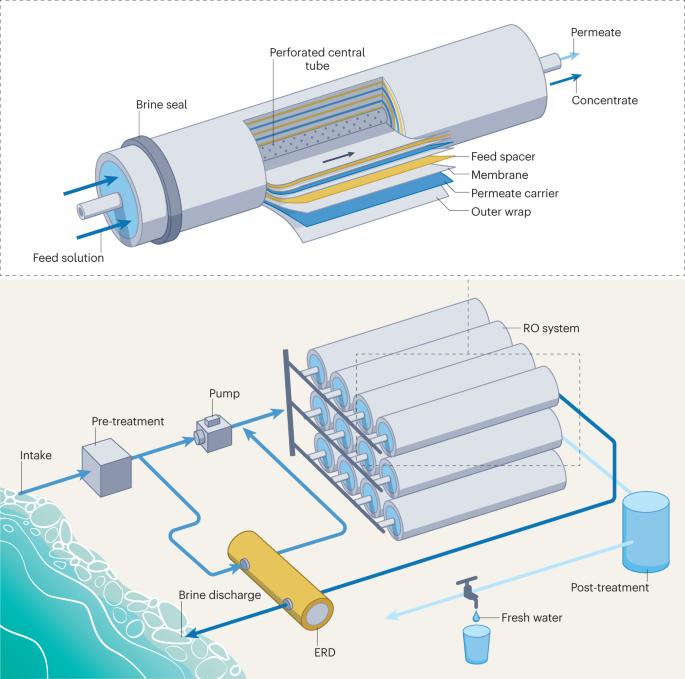Pressure-driven membrane desalination
IF 56
Q1 MULTIDISCIPLINARY SCIENCES
引用次数: 0
Abstract
Pressure-driven membrane desalination (PMD), such as reverse osmosis or nanofiltration, is an energy-efficient technology that addresses water shortages by using saline waters to augment freshwater supplies. This Primer describes several key methodological aspects of PMD, including membrane fabrication, characterization and performance evaluation; system modelling; process configurations; and applications. Thin-film composite polyamide membranes represent the state of the art in reverse osmosis and nanofiltration membranes and are the focus of the membrane development discussion. First, thin-film composite polyamide membrane fabrication using interfacial polymerization and alternative methods is discussed, followed by an exploration of techniques for characterizing the morphological, structural and interfacial properties. Experimental procedures and model frameworks for evaluating membrane performance are introduced, noting caveats in data collection, interpretation and reproducibility, with best practices recommended. Additionally, the general method for modelling the module-scale behaviour of PMD processes is introduced, alongside process configurations for existing and emerging applications. Finally, an outlook for the development of PMD is provided, highlighting the most meaningful directions for future research to further advance PMD beyond the current state of the art. Fresh water can be produced from saline water using pressure-driven membrane desalination. This Primer explores how reverse osmosis and nanofiltration are used as energy-efficient desalination methods, with a focus on membrane development, characterization and performance modelling.

压力驱动膜脱盐
压力驱动膜脱盐(PMD),如反渗透或纳滤,是一种高能效技术,通过利用盐水来增加淡水供应,从而解决水资源短缺问题。本《入门指南》介绍了 PMD 的几个关键方法,包括膜制造、表征和性能评估;系统建模;工艺配置和应用。薄膜复合聚酰胺膜代表了反渗透膜和纳滤膜的最新技术,是膜开发讨论的重点。首先,讨论了使用界面聚合和替代方法制造薄膜复合聚酰胺膜,然后探讨了表征形态、结构和界面特性的技术。介绍了评估膜性能的实验程序和模型框架,指出了数据收集、解释和可重复性方面的注意事项,并推荐了最佳做法。此外,还介绍了 PMD 过程模块规模行为建模的一般方法,以及现有和新兴应用的过程配置。最后,展望了 PMD 的发展前景,强调了未来最有意义的研究方向,以进一步推动 PMD 超越现有技术水平。使用压力驱动膜脱盐法可以从盐水中生产淡水。这本入门书探讨了如何将反渗透和纳滤用作高能效的海水淡化方法,重点是膜的开发、表征和性能建模。
本文章由计算机程序翻译,如有差异,请以英文原文为准。
求助全文
约1分钟内获得全文
求助全文

 求助内容:
求助内容: 应助结果提醒方式:
应助结果提醒方式:


